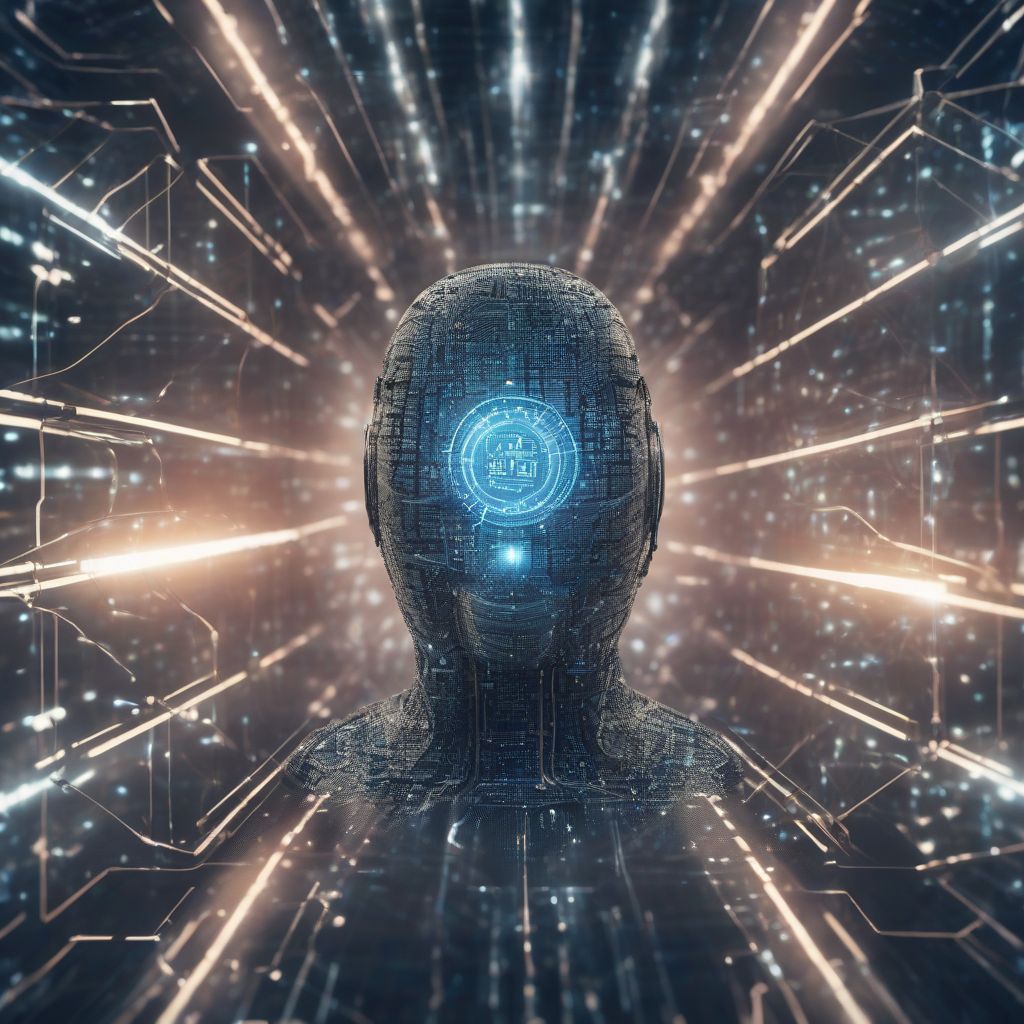Imagine this: You’re asleep, but a silent guardian is tirelessly working, analyzing your every move, learning your patterns, predicting threats before they even materialize. No, it’s not a scene from a sci-fi movie; it’s the reality of AI in cybersecurity and threat detection.
In today’s digital landscape, where threats lurk in every byte of data, traditional security measures often fall short. Businesses and individuals alike face a barrage of sophisticated cyberattacks that evolve faster than ever before. That’s where AI steps in, armed with its ability to analyze vast amounts of data, detect anomalies, and adapt to emerging threats at lightning speed.
The Power of AI in Cybersecurity: Unveiling the Arsenal
AI’s strength lies in its ability to process and learn from massive datasets, a feat impossible for humans to replicate. This capability translates to a powerful arsenal of tools and techniques that bolster cybersecurity on multiple fronts:
1. Threat Detection and Prevention: A Proactive Approach
- Intrusion Detection and Prevention Systems (IDPS): AI-powered IDPS go beyond signature-based detection, recognizing patterns and anomalies in network traffic to identify and block malicious activities in real-time. Imagine them as vigilant guards, constantly scanning for suspicious behavior and preventing intrusions before they wreak havoc.
- Malware Detection: Polymorphic malware, designed to evade traditional security measures, is rendered powerless against AI. By analyzing code structure, behavior patterns, and other characteristics, AI-powered systems can detect and neutralize even the most sophisticated malware strains.
- Phishing Detection: Phishing attacks, notorious for their deceptive tactics, are becoming increasingly sophisticated. AI steps in to analyze emails for suspicious links, attachments, and language patterns, protecting users from falling victim to scams.
2. Incident Response: Swift Action When It Matters Most
- Security Information and Event Management (SIEM): AI-powered SIEM systems act as centralized command centers, aggregating security data from various sources and using machine learning to identify, prioritize, and respond to security incidents with unparalleled speed and accuracy.
- Automated Threat Remediation: Imagine a system that not only detects threats but also takes immediate action to neutralize them. AI makes this a reality, automating tasks like quarantining infected devices, blocking malicious IPs, and even patching vulnerabilities, significantly reducing response times and minimizing damage.
3. Vulnerability Management: Staying One Step Ahead
- Predictive Analytics: AI analyzes historical data and identifies patterns that indicate potential vulnerabilities. This proactive approach allows organizations to patch vulnerabilities before attackers can exploit them, preventing breaches before they occur.
- Penetration Testing: AI can simulate real-world attack scenarios, helping organizations identify weaknesses in their defenses and prioritize remediation efforts. It’s like having a tireless red team constantly probing your systems for weaknesses.
Real-World Applications: Where AI Makes a Difference
The impact of AI in cybersecurity is not limited to theoretical applications; it’s already making waves across various industries:
- Financial Services: Banks and financial institutions use AI to detect fraudulent transactions, prevent money laundering, and secure sensitive customer data.
- Healthcare: AI safeguards patient data, detects insurance fraud, and ensures the integrity of medical devices.
- Government and Defense: AI plays a crucial role in protecting national security, detecting cyberespionage, and defending critical infrastructure from attacks.
 AI in Cybersecurity
AI in Cybersecurity
[amazon bestseller=”cybersecurity”]
The Future of Cybersecurity: Embracing the AI Revolution
As cyber threats continue to evolve, AI’s role in cybersecurity will only become more critical. Here’s a glimpse into the future:
- Increased Automation: AI will automate more security tasks, freeing up human analysts to focus on strategic decision-making and complex threat analysis.
- Contextual Awareness: AI systems will gain a deeper understanding of user behavior and network context, enabling them to detect and respond to threats with even greater accuracy.
- Collaboration and Intelligence Sharing: AI will facilitate collaboration between security researchers and organizations, allowing them to share threat intelligence and develop more effective defense strategies.
Conclusion: A Safer Digital Future with AI
The world is rapidly becoming more interconnected, and with this interconnectedness comes increased vulnerability. AI is no longer a luxury in cybersecurity; it’s a necessity. By embracing AI’s capabilities, businesses and individuals can strengthen their defenses, stay ahead of emerging threats, and create a safer digital future.
What steps are you taking to bolster your cybersecurity? Share your thoughts and experiences in the comments below!
